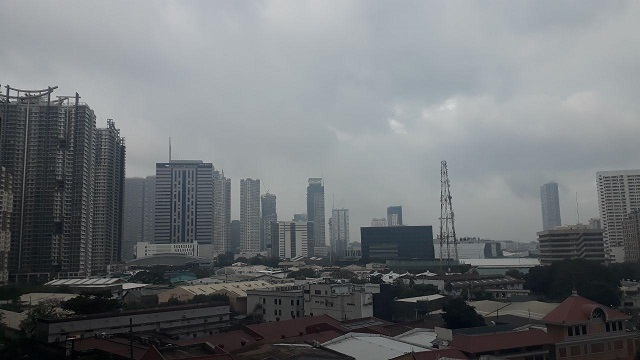(SPOT.ph) Taal Volcano remains on Alert Level 2, with the Philippine Institute of Volcanology and Seismology alerting people of "vog" (Read: volcanic smog) over the caldera. Pics from different parts of Metro Manila covered in a haze are also making the rounds online. People understandably equated it to the nearby volcanic activity—but the institute was quick to confirm that the haze in Manila was not related.
[facebook:https://ift.tt/3jqSYos]
The haze in Metro Manila and nearby areas was because of pollution brought about by "human activities," said the Philippine Institute of Volcanology and Seismology (PHIVOLCS) on their official Facebook page on June 29. The vog from Taal Volcano is over the caldera region, reiterated the institute as well in their 4 p.m. bulletin on the same day. "Particularly towards the northeast and eastern lakeshore communities," it stated. Adverse effects of the vog among folks in Tanauan City and Talisay had been reported.
Where did the smog in Metro Manila on June 29, 2021 come from?
Which leaves the question: What was up with the sudden smog in Metro Manila on June 29? Well, aside from the obvious answer of manmade pollution, one meterologist from the Philippine Atmospheric, Geophysical and Astronomical Services Administration also pointed towards thermal inversion.
[twitter:https://twitter.com/johnarielrojas/status/1409415413813813249]
John Ariel Rojas, a Philippine Atmospheric, Geophysical and Astronomical Services Administration (PAGASA) forecaster, tweeted on June 28 that the sudden appearance of pollution—well, a more concentrated layer of dirty air than normal—in Metro Manila could also be attributed to a thermal inversion.
[twitter:https://twitter.com/johnarielrojas/status/1409415425067130883]
Rojas continued with a graphic explaining what thermal inversion is. The normal air temperature gradient should go from warm air on the ground that gets cooler on the way up. But when a thermal inversion occurs, there is a warm layer that blocks air from going up—effectively trapping pollution below.
He also added that the air forecast over the Philippines showed high concentrations of sulfur dioxide. Recently, air in the Metro Manila was tagged as "unhealthy" on June 28 by IQAir, a Swiss air-quality technology company.
Also read:
No Surprise Here: Air Quality in Metro Manila Is in the Red Zone
10 Nature Documentaries to Watch, Ranked by How Much We're F*ckedWhen the Air You Breathe Can Kill You
Not the First Time Smog Blanketed Metro Manila

A similar "fog" covered Metro Manila on January 24, 2020, B.C. times (Before Coronavirus), as well. Dr. Gerry Bagtasa of the University of the Philippines Institute of Environmental Science and Meteorology, pointed to stagnant air caused by two winds colliding as the reason for the pollution trap.
Interestingly enough, this smog blanket also occured sometime around Taal volcanic activity as well. Taal Volcano reached Alert Level 4 on January 12, 2020, spewing ash that reached Metro Manila and beyond.
Whether vog or plain old smog, it's best to stay safe! Head out only when necessary and definitely give some time to learn about climate change.
[ArticleReco:{"articles":["86624","86630","86631","86625"], "widget":"Hot Stories You Might Have Missed"}]
Hey, Spotters! Check us out on Viber to join our Community and subscribe to our Chatbot.
Source: Spot PH
No comments:
Post a Comment